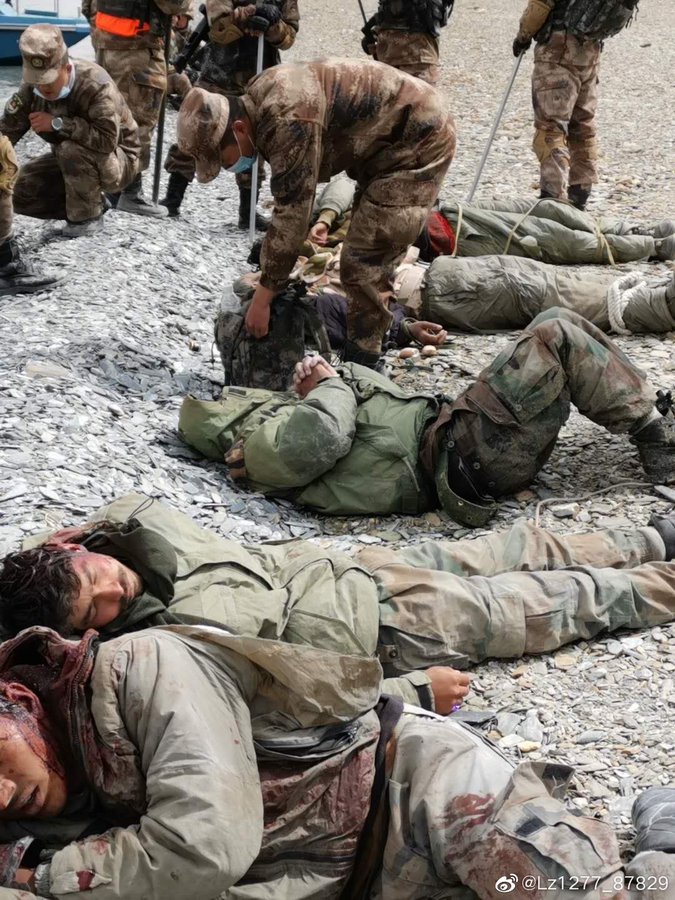New Delhi: Indian military officials says they have observed a “thinning” in the density of Chinese soldiers at some of the stand-off points along the Line of Actual Control since Monday but add that there is no clear sign of Beijing signalling any retraction from its positions in eastern Ladakh.
On Saturday, Indian and Chinese military held talks at the highest level since the armies of the two countries began their month-long stand-off at three points. After the talks, India had said that engagement at various levels will be continued “to resolve” the matter – which indicated that there
was no substantial breakthrough.
A Chinese foreign ministry spokesperson on Monday echoed the same readout, stating that the “two sides are ready to engage in consultation to
properly solve the relevant issues”.
Indian military sources said on Tuesday that there had since been some change in the ground situation, but were not ready to describe these developments as permanent or even the start of a disengagement process. “We have seen some thinning of Chinese troops at some points in Galwan and Hot Springs since yesterday,” military sources told
The Wire.
While the density of troops may have come down, the Chinese continue to be present in those areas where they had poured in soldiers sometime in late April-early May.
‘China changing LAC on the ground’
Expressing skepticism about the supposed “thinning” of Chinese deployments, military analysts say the stand-off can only be resolved if the Chinese remove both troops and infrastructure from the territory that they have intruded into beyond the LAC.
“What is important is not any thinning of troops. It is that the PLA has changed facts on the ground by building concrete defences,” said editor of
Force magazine, Pravin Sawhney. “Will they dismantle them? The answer is No. So the LAC has changed – unless India has the gumption to dismantle [these Chinese] defences.”
Also Read:
In Talks, China Takes Hard Line, Claims All of Galwan Valley, Chunk of Pangong Tso
Sawhney, who is co-author of the book,
Dragon On Our Doorstep: Managing China Through Military Power, said the Chinese side may “simply be giving leeway to Modi” to provide the perception that he had successfully resolved the standoff. “What price India will pay for this, we don’t know yet,” he added.
If there is indeed a “thinning” of the troop presence, this may be of little consequence if the original deployment was large. Last week, in fact, India’s defence minister used the Hindi phrase
“bhaari sankhya” – heavy numbers – in reference to the Chinese soldiers, who some military sources had claimed were in the low thousands.
A senior military source told
The Wire on Tuesday that it would be too early to make an assessment that the Chinese were packing up, especially since the number of ground forces have not been static during the past one month. “There have been previous instances, for example in Galwan where the Chinese had retracted for a bit, and then come back again,” the official said.
According to Indian military sources, a key issue for India in the current stand-off has been the “vacation” of Chinese troops from the Indian side of the Line of Actual Control in Pangong Tso.
They said that while there has been no change at Pangong Tso lake, which is India’s main concern, a confrontation had taken place along its northern bank.
India’s claim line passes at Finger 8, one of the spurs jutting out onto the north bank of the lake, while China perceives the LAC to be based at Finger 2.
Also Read:
Why It Is Imperative That Indians Come to Know What Happened in 1962
Indian patrols had gone up to Finger 6, but had a physical presence in recent times only till Finger 4. This time, the Chinese came up to Finger 4, where their encounter with an Indian patrol team deteriorated into violence on May 9.
The military’s off-the-record characterisation of the Chinese ingress is at odds with what the government is prepared to say. When Rajnath Singh’s statement in a TV interview about a large number of Chinese having “come in” was reported by the media as an admission of Chinese troops having crossed the LAC, the government decried this as “fake news”: “The minister was referring to differing perceptions of LAC & presence of Chinese troops It is being misinterpreted as if Chinese troops entered Indian side of LAC,” the
Press and Information Bureau tweeted on June 2.
The talks held on Saturday had been at the highest-level border meeting ever, with the Indian side led by Lt General Harinder Singh, general officer commanding of Leh-based 14 Corps, and Major General Liu Lin of South Xinjiang military district.
India’s position at the talks had been to seek a roll back to the status quo before the talks began.
Military officials here speculate that the ‘thinning’ of Chinese troops which the Indian side claims to have observed, could be more of a negotiation tactic to show the Indian side that they are willing to be flexible. However, since the Chinese side had also been made demands – specifically about Indian border infrastructure, it is not clear whether New Delhi has taken any other steps, besides removing some of its own troops in a mirror move.
During previous rounds of talks, China has repeatedly raised objections on the Darbuk-Shyok-Daulat Beg Oldie road (DSDBO), whose construction began in 2001 and was finally completed last year.
https://thewire.in/security/india-s...d-off-points-but-no-respite-in-chinese-claims











